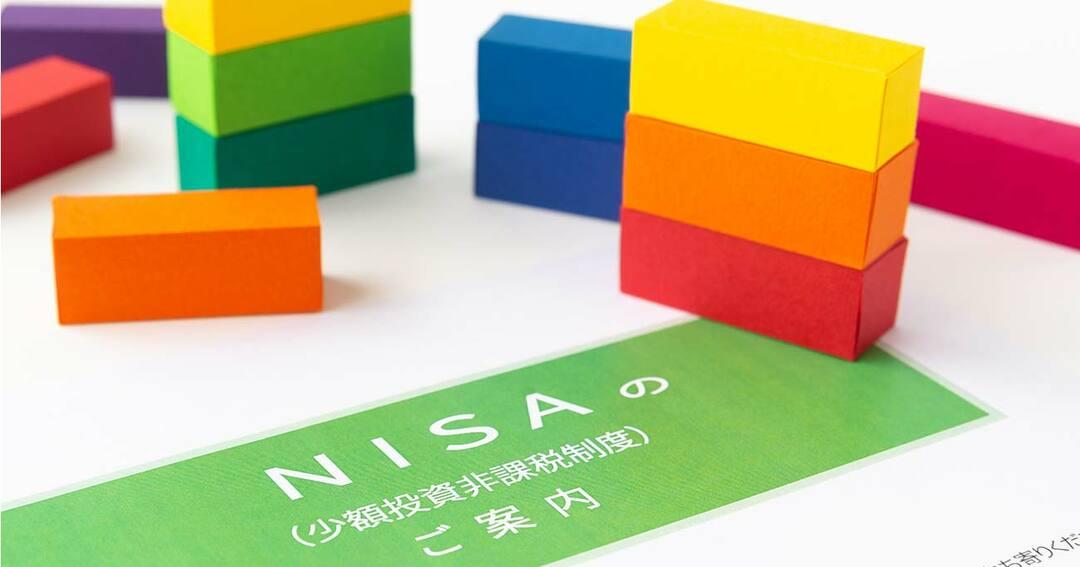A detailed explanation of the risks of leveraged funds and how to use them...Is there a reserve investment? |Warashibe Tile Plate (Kawaraban)
Don't you think the bull market will continue? “We should have invested more,” he said. I think this sentiment crosses the mind of every investor. It's not realistic to think like that, and it's up to luck to guess when the rising market will actually start and how long it will last. Well, this time the theme is "Leverage Fund". It is a product that has the potential to make large profits due to market movements, but it also has the potential to suffer large losses. In fact, even if the market moves in the direction you were aiming for, it is possible that you may not get the profit you expected, so it is necessary to fully understand and invest in it. Therefore, in this article, we will explain what a leveraged fund is and how it works in an easy-to-understand manner so that you can understand the risks. On top of that, I would like to show you how to use it.
What is a leveraged fund?
Leveraged funds (leveraged funds), like index funds, are funds that aim to track a reference index such as the Nikkei Stock Average. However, the method of linking is different from index funds, and leveraged funds aim to link the price movements of the reference index multiplied by a certain ratio (leverage ratio). For example, if the reference index rises by 3%, the price will rise by 6% with 2x leverage and 9% with 3x leverage.
In addition, there is a pair of leveraged funds, which is called an "inverse fund". An inverse fund seeks to move in the opposite direction of the price movement of the reference index, or by multiplying the price movement by a multiple of leverage. For example, if the reference index rises by 3%, the inverse with 1x leverage will drop by 3%, and the inverse with 2x leverage will drop by 6%. “Leveraged/inverse funds” are also called “bull/bear funds”. Due to the above characteristics, these funds are high-risk, high-return funds that can aim for greater returns in response to market price fluctuations (excluding inverse funds with 1x leverage). ).
Features of Price Movements of Leveraged Funds
Now that you have an overview of leveraged funds, I would like to explain the features of price movements. In general, leveraged funds utilize futures trading and aim to achieve a rate of change that is the "daily" rate of change (price movement) of a reference index multiplied by a leverage ratio. However, when looking at the "operation period of 2 days or more", the fluctuation rate of the fund's NAV does not become the leverage multiple of the reference index fluctuation rate. As a concrete example, let's look at the price movements of a 2x leveraged fund. First, consider the case where the reference index rises or falls and then returns to its original level. At this time, I intuitively feel that the NAV of leveraged funds will return to its original level. However, in fact, as shown in the figure below, in both cases, the “rate of change from the base date” on the second day is negative, and the base price is below the level on the base date. In other words, it is important to note that even if the reference index repeatedly moves up and down and eventually returns to its original level, the NAV of the leveraged fund will fall.
Next, consider the case where the reference index rises or falls continuously. Again, this is also consistent with 40% (-40%), which is 20% (or -20%), which is the "rate of change from the base date" on the second day of the reference index, multiplied by the leverage ratio of "2". plug. This time both cases are more than doubled (higher level of return).

The reason why the price moves like this is that the investment behavior of "buying futures when the reference index rises and selling futures when it falls" in order to maintain the daily leverage ratio. I have. In general, the price of an asset without a principal guarantee fluctuates up and down, and the investment behavior of leveraged funds to "buy high and sell low" during the period when the price fluctuates up and down at a certain level is disadvantageous. becomes. Conversely, a leveraged fund's investment behavior of "continue to buy (continue to sell)" during a period of continued rising (continuous falling) is advantageous. For this reason, it is important to note that leveraged funds are products whose main purpose is to obtain profits through short-term trading during periods when stocks can be expected to move in one direction. In fact, a simulation of the price trends of TOPIX (including dividends) and leveraged funds linked to it shows that TOPIX has risen by about 164% over the past 20 years, while double leverage has risen by about 190%164. It is well below 328%, which is double the %. It can be confirmed that the return of TOPIX without leverage is much lower than the return of TOPIX without leverage, which is only about 30% increase when the leverage reaches 3 times. Furthermore, while the unleveraged TOPIX is significantly higher than its pre-Lehman shock high, the 3x leveraged is below the pre-Lehman shock level for most of the period, and even recently reached about one-third of its high. I also know that I have not recovered.
It is also important to note that leveraged funds generally have much higher trust fees than index funds. Please also note that the above graph does not take into account trust fees and taxes. Based on the above, if your goal is medium- to long-term asset building, you should consider increasing your investment in an index fund that aims to track the same index before considering investing in a leveraged fund. I think it's theory.
Risks peculiar to leveraged funds
Another point to be aware of when considering investing in leveraged funds is the risk that the base price will be 0 yen. Normally, investment trusts will not lose their value unless all the assets and stocks in which they are invested actually go bankrupt. And since the reference indices of leveraged funds are generally indices such as the Nikkei Stock Average and the Dow Jones Industrial Average, it is considered extremely unlikely that all constituent stocks will go bankrupt and become zero. However, in the case of leveraged funds, even if the reference index does not become zero, there are cases where the base price becomes 0 yen due to price movements in the reference index. For example, in the case of a 2x leveraged fund, if the reference index crashes and the futures contract repeats the stop price every day, and the price at which the fund can trade the futures after the crash falls by more than 50% from the price immediately before the crash, the theoretical The value of the upper fund disappears. Many people think that the possibility of such a thing happening is extremely small, but in the first place, the most important thing in medium- to long-term asset building is to firmly control risk.
Actually, it is thought that there are many cases in which the fund is redeemed early before the NAV reaches 0 yen, but even in the case of early redemption, the investment cannot be continued. In addition, installment investment is often seen as a point of asset formation, and the advantage is that if investment assets rise in the medium to long term, it can be seen as an opportunity to purchase a larger amount when investment assets fall. are often mentioned. However, this merit is based on the major premise that recovery can be expected even if the price falls sharply, and that a rise can be expected in the medium to long term. Leveraged funds often have a sharp drop in the NAV, so there is a tendency to think that there are many chances for accumulation in reserve investments. Let's understand firmly.
How to use leveraged funds
So far, I have explained the risks and cautions of leveraged funds. Not at all. Leveraged funds are characterized by the ability to obtain large investment results with a small amount of money. For example, as mentioned above, we believe that it is worth considering as an investment destination to obtain profits through short-term trading. Focusing on various economic indicators and political and economic events, and carefully conducting macroeconomic analysis and supply and demand analysis, it becomes possible to select a phase with a high degree of confidence. In addition, as the investment environment changes from moment to moment, it is also a good idea to invest in a leveraged fund in the short term when it is determined that there is a high degree of certainty that the stock will rise in one direction. On the other hand, inverse funds can also be used to reduce risk. For example, if you are investing in Japanese stocks, say, "I want to continue holding stocks (selected after careful consideration), but I feel that the risk of a decline in the Japanese stock market as a whole is high. If you want to reduce it, we think that investing in Nikkei 225 or TOPIX inverse funds is an effective method. When actually investing, high-risk assets such as leveraged funds should be especially careful about the investment amount. The amount of risk you can take (investable amount) can vary greatly depending on factors such as your age, family structure, employment stability at your company, corporate pension and retirement allowance systems, and the level of benefits provided.
In any case, you should understand the investment environment and your attributes, and execute it after examining it. Based on these points, I think it would be interesting to think about how to make good use of leveraged funds.
The principle is "don't invest in things you don't understand"
About 1 year and 9 months have passed since the corona shock, and the recent stock market is recovering rapidly, mainly in the United States. Partly because of this market environment, leveraged funds are attracting attention, and I think there are more than a few people who are actually considering investing in them. However, as we have explained so far, there are notable risks associated with leveraged funds, and we believe that investing without a proper understanding of these risks is extremely dangerous. Warren Buffett, who is called the god of investment, says, "Don't invest in something you don't understand," and this can be said to be a principle of investment. In this article, we have explained leveraged funds with a focus on risk, but there is this principle behind it. We hope that you will understand the leveraged fund correctly and make good use of it. (Written by 1st-class Certified Skilled Worker of Financial Planning
*The Tokyo Stock Price Index (TOPIX) is the intellectual property of the Tokyo Stock Exchange, Inc. (Tokyo Stock Exchange, Inc.). , owned by the Tokyo Stock Exchange, Inc.
■ What is leverage in the first place? Click here if you want to check
■ How are index funds managed?
■ You can practice immediately! ? Thorough explanation of reserve investment








